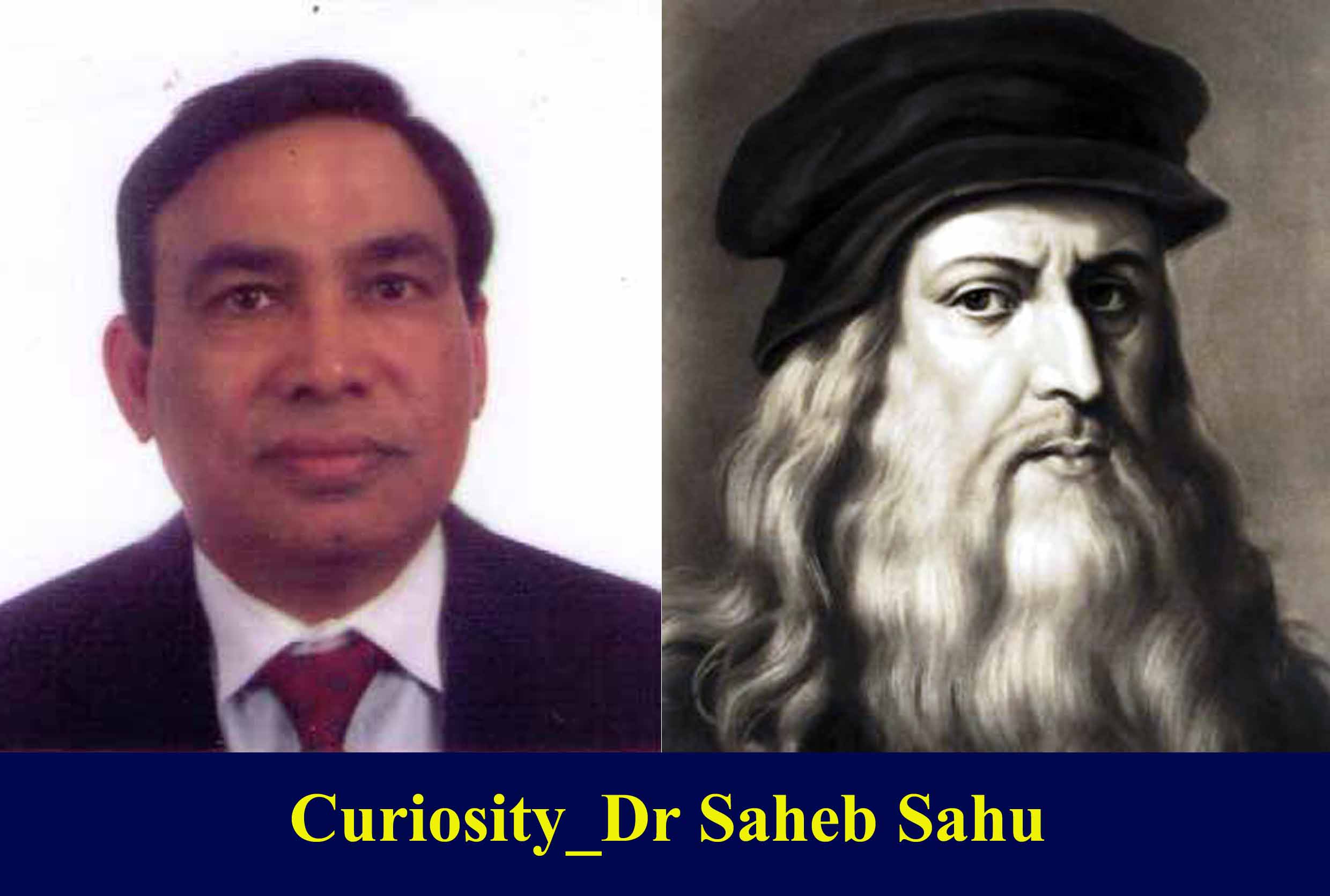“The important thing is not to stop questioning. Curiosity has its own reason for existence.’’_Albert Einstein
Leonardo da Vinci (1452-1519 CE)
Leonardo da Vinci or simply Leonardo, was an Italian polymath (a person with knowledge of many subjects) whose areas of interest included invention, painting, sculpting, architecture, science, music, mathematics, engineering, anatomy, geology, astronomy, botany, history, and cartography(map making). Some historians also credit him with the inventions of parachute, helicopter and tank. Today Leonardo is widely considered one of the most diversely talented individuals ever to have lived (Wikipedia.org).
We will never be able to match Leonardo’s talent and curiosity, but we can try to cultivate, in ourselves and in our children at least a fraction of it.
Curiosity (from Latin curiositas) is a quality related to inquisitive thinking. It is a quality seen in humans and some animals including apes, cats and rodents. It is a strong desire to learn and know about anything. It is also a desire to know about people or things that do not concern one; nosiness and snoopiness.
Curiosity does not like rules. It assumes that all rules are provisional and there to be broken. Pursuing it is liable to bring you into conflict with authority at some point. It happened to Socrates, Galileo, Darwin and Steve Jobs (Co-founder of Apple) and many more. But without curiosity there can be no progress in our world.
How to Cultivate Curiosity?
1- Encourage Children to Be Curious About Everything
Leonardo’s most distinctive trait was his passionate, playful and occasional obsessive curiosity. He made lists in his note books of hundreds of subjects. According to Walter Isaacson (one of his biographers 2017) Leonardo instructed himself to investigate the placenta of the calf, the jaw of the crocodile, the muscle of the human face, the glow of the new moon and the edges of the shadow. His mind wondered merrily across the arts, sciences, engineering and humanities.
Children by nature are very curious. The curiosity of children disappears when it does not get fed by knowledge, imparted by parents and teachers. Children without adequate background knowledge of a subject tend to give up on learning about it, deciding that it’s just ‘‘not for me’’. Childhood curiosity is collaboration between child and adult. It is important that parents and teachers nurture it with appropriate knowledge. The surest way to kill a child’s curiosity is to ignore it.
Having a hungry mind has been shown to be more important than I.Q. for academic success. Curious learners make creative connections between different fields-leading to new ideas and inventions. Hence, all parents and teachers should encourage a child to ask questions, challenge the teacher or the parents and let him or her investigate things which seems dangerous to the parents.
2-Build a Database of Knowledge
Great ideas don’t just spring from great mental efforts. Their roots extend back months, years, decades into the person’s lifetime of knowledge and experience. Knowledge is more than a bundle of information or facts. It is an organized body of information. To have knowledge you need to build a database. You can build a database by reading, listening and seeing things with an inquisitive mind. It involves not taking other people’s opinion or ideas for granted but looking into them from all different angels.
We have all heard about the “eureka” moments, when ideas seem to drop unbidden into the curator’s head. In fact, eureka moment is very rare. Most good ideas arise from the gathering and the working over- the slow, deliberate, patient accumulation of knowledge. It is said that an invention is the result of 90% perspiration and 10% inspiration.
3- Forage Like a Fox-hog
In the words of Greek poet Archilochus (714-676 BCE) ‘The fox knows many things, but the hedgehog knows one big thing’. The English philosopher Isaiah Berlin proposed that all thinkers could be divided into one of those two categories- fox or hedgehog. There are thinkers who look at the world through the lens of one particular idea (specialist or the hedgehog) and those who revel in a variety of perspectives (generalist or fox). Steve Jobs (Co-founder of Apple) was a fox, but his Co-founder Steve Wozniak is a hedgehog which may explain why they worked so well together.
The thinkers or inventors best positioned to thrive today and in the future will be a hybrid of those two animals. In a highly competitive, high information today’s world, it’s important to know one or two big things (specialist).But to really ignite innovation or invention, you need the ability to think about it from variety of different perspectives. You should also be able to collaborate with people from different fields of specialization.
The discussion of the hedgehog and the fox often comes down to whether it’s better to be one or the other. At present, the world usually rewards the person, who is a specialist in a particular field. But a ground breaking insight (invention) usually comes from the collaboration of different fields. Hence these days a person should be both- a fox-hog. Be a specialist in one or two fields but be somewhat knowledgeable about variety of other fields.
At the end of his 2005, Stanford University Graduation Speech, Steve Jobs’ advice to the students went like this:
“Your time is limited, so don’t waste it living someone else’s life. Don’t be trapped by dogma which is living with the results of other people’s thinking. Don’t let the noise of other people’s opinions drown out your inner voice. And most importantly, have the courage to follow your heart and intuition. They somehow already know what you truly want to become. Everything else is secondary. – Stay Hungry. Stay Foolish”.
To that I will add- Be curious, ask questions, observe attentively and indulge in daydreaming.



